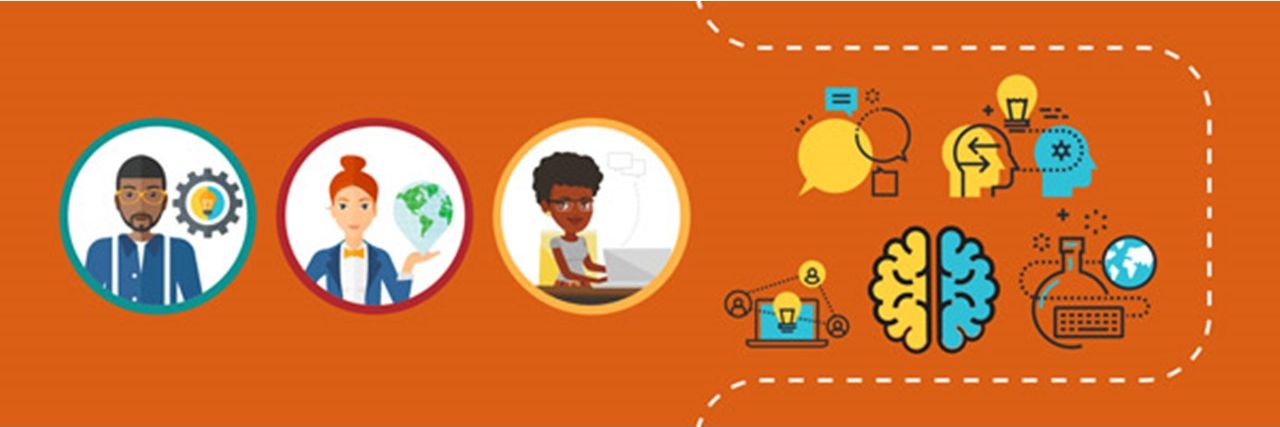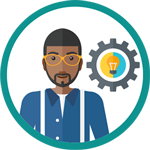3 Entrepreneurship Paths for Community College Students

3 Entrepreneurship Paths for Community College Students
Identifying the different pathways innovators take to pursue entrepreneurship is crucial for community college educators seeking to support under resourced students. Part of VentureWell’s Advancing Equity: Navigating New Terrain series includes Mapping Inclusive Pathways to Entrepreneurship, a resource by Monica Dean, Managing Director of the Lloyd Greif Center for Entrepreneurial Studies at the University of Southern California and Cheryl Finley, Director of the Atlanta University Center Art History + Curatorial Studies Collective and Distinguished Visiting Professor of Art History at Spelman College. Mapping Inclusive Pathways to Entrepreneurship provides faculty and entrepreneurial organization leaders with key strategies to promote and support the dreams and innovations of more student entrepreneurs.
Students begin their entrepreneurial journeys at different entry points, whether it be their ages, motives, or stage of venture development; the authors visually represented those journeys as a map showing the different ways students pursue problem-solving in their communities and suggesting how innovation and entrepreneurship can be introduced along the way. Below, we’ve highlighted the three paths that the authors crafted.

I want to help create a more equitable society
The first pathway introduces a student who is passionate about solving social issues impacting his community:
- His school’s entrepreneurship center gives a presentation at his affinity club, which is where he first connects entrepreneurship and his motivation to address homelessness in his community.
- As he becomes more and more invested in creating a solution through entrepreneurship, he meets peers with similar interests at his school’s entrepreneurship center and receives institutional support and affirmation.
- This support encourages him to attend an inclusive innovation workshop and take a course in design thinking where he builds out his solution.
Integrating institutional support pillars is crucial to developing inclusive pathways; as the Mapping Inclusive Pathways to Entrepreneurship resource explains, early-stage innovators thrive when their motivations and personal measures of success are validated. Additionally, this student’s interest in entrepreneurship was bolstered when he met peers who were also interested in developing solutions to social issues at his school’s entrepreneurship center.
While working to expand entrepreneurial programming at Smith College, a small women’s liberal arts college in Massachusetts, Dean realized that most students did not arrive at Smith with the intent of launching an entrepreneurial venture—and that some students were even intimidated by anything that had to do with business. She found that students were personally mission-driven and much more interested in social justice, and by pivoting her approach, she could meet the students where they were.
“To better understand who our customers were, we hired campus liaison interns who organized listening lunches with students from all different backgrounds and majors to better understand what they were interested in, and that helped us better shape our programming. We changed the programming so that it was more specific to the needs and desires of our students, and created a series of programming on the UN sustainable development goals which was extremely popular.
 I have always been a problem solver
I have always been a problem solver
The second pathway introduces a first-generation college student who considers herself to be a self-motivated problem solver:
- She first becomes interested in innovation and entrepreneurship (I&E) after meeting a representative of her school’s entrepreneurship center, who is also a first-generation college student. The student decides to take an entrepreneurship course, and then attends an inclusive innovation workshop and design thinking course to more fully immerse herself in entrepreneurial innovation.
- With the help of a professor, she is given the opportunity to intern at an existing company and apply what she has learned. Once she graduates, she accepts a job at a company that uses an inclusive entrepreneurial mindset to address and solve complex problems.
In the second pathway, it’s clear that authentic outreach and mentorship is crucial to developing inclusive pathways to entrepreneurship. The student was able to connect with the entrepreneurship center representative because they were both first-generation college students, an underrepresented group in innovation and entrepreneurship.
“Centers need to start from a position in which any student can be a potential participant in entrepreneurship and innovation programming. There should be no one archetype,” said Dean. “Centers need to examine their co-curricular programming that they are offering to evaluate whether they are attracting an inclusive audience."
 I have an idea for a new invention
I have an idea for a new invention
The third pathway introduces a student who creates an invention to help a family member with a disability:
- Like the first two students, she takes an entrepreneurship course and learns strategies to further develop her invention.
- She then joins forces with an engineering major and business major, and the team wins a competition for their innovation.
- The team then attends a startup accelerator program, develops a prototype, validates their value proposition, and ultimately launches their venture.
The student in this pathway begins her entrepreneurial journey at a very different point than the students in the other two examples: She already has an invention. Unlike the other two students, this student does not need to be introduced to science and technology entrepreneurship in quite the same way. She needs different support structures to guide her through the development of her technology. These may include:
- the opportunity to meet with her peers so she can find collaborators
- faculty mentorship to learn about and apply to innovation competitions
- access to a laboratory or maker’s space to design and manufacture a prototype
Both Dean and Finley have led programs at their respective universities that enabled students to identify problems they wanted to address and develop solutions through entrepreneurial principles. Faculty and center leaders can look to their administrations for support designing, funding, and launching entrepreneurship workshops or accelerators at their institution.
Ultimately, what’s vital, Finley emphasized, is discovering how and where students take the first step on their entrepreneurial journeys and ensuring that they have support from the start.
"We can't lose sight of the multiple entry points that faculty, administrators and students have into the complex questions we need to solve and the complex ideas we need to share," she said.
——
By defining the potential entrances and milestones of student innovators, faculty and center leaders can provide students with exactly what they need to advance on their path. At any given point during their entrepreneurial journeys, student innovators will need a unique combination of resources, support structures, and opportunities.
VentureWell and NACCE are here to support faculty as they guide future generations of student innovation. Explore more of VentureWell’s Advancing Equity resources and to learn more, register for OPEN 2022, the premier entrepreneurship and innovation education conference.
Join us for our webinar, Advancing Equity: Navigating New Terrain on Thursday, February 17 from 12:00pm to 1:00pm ET.
